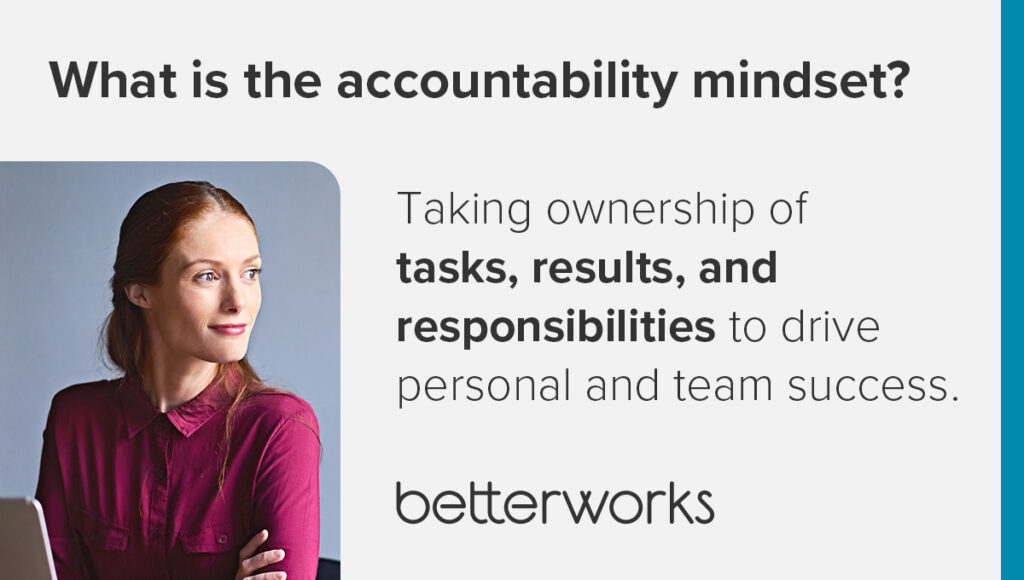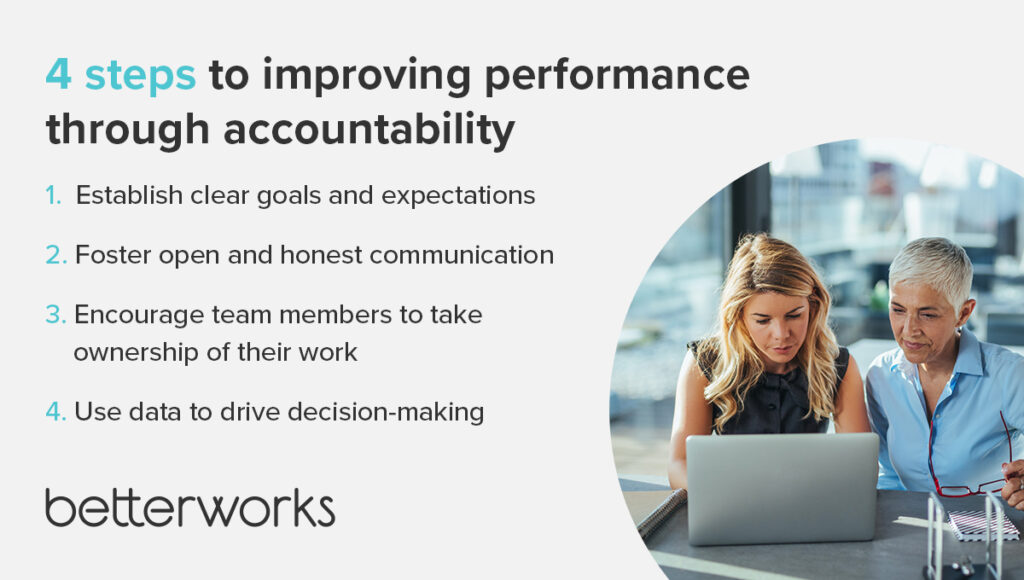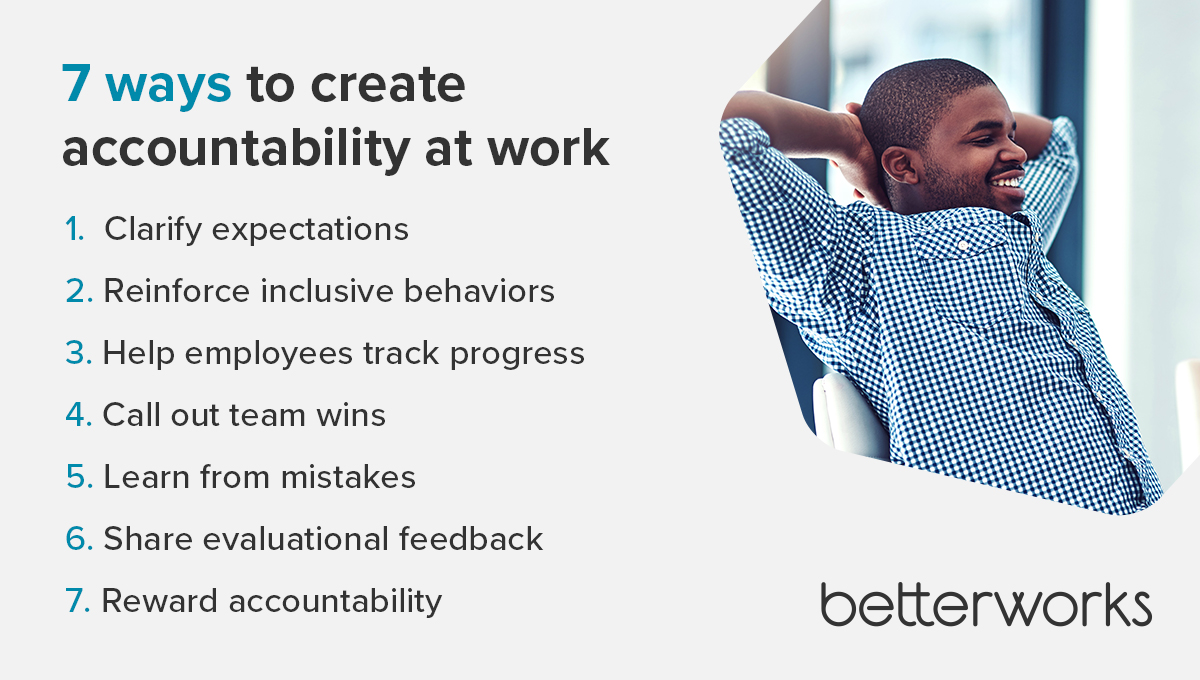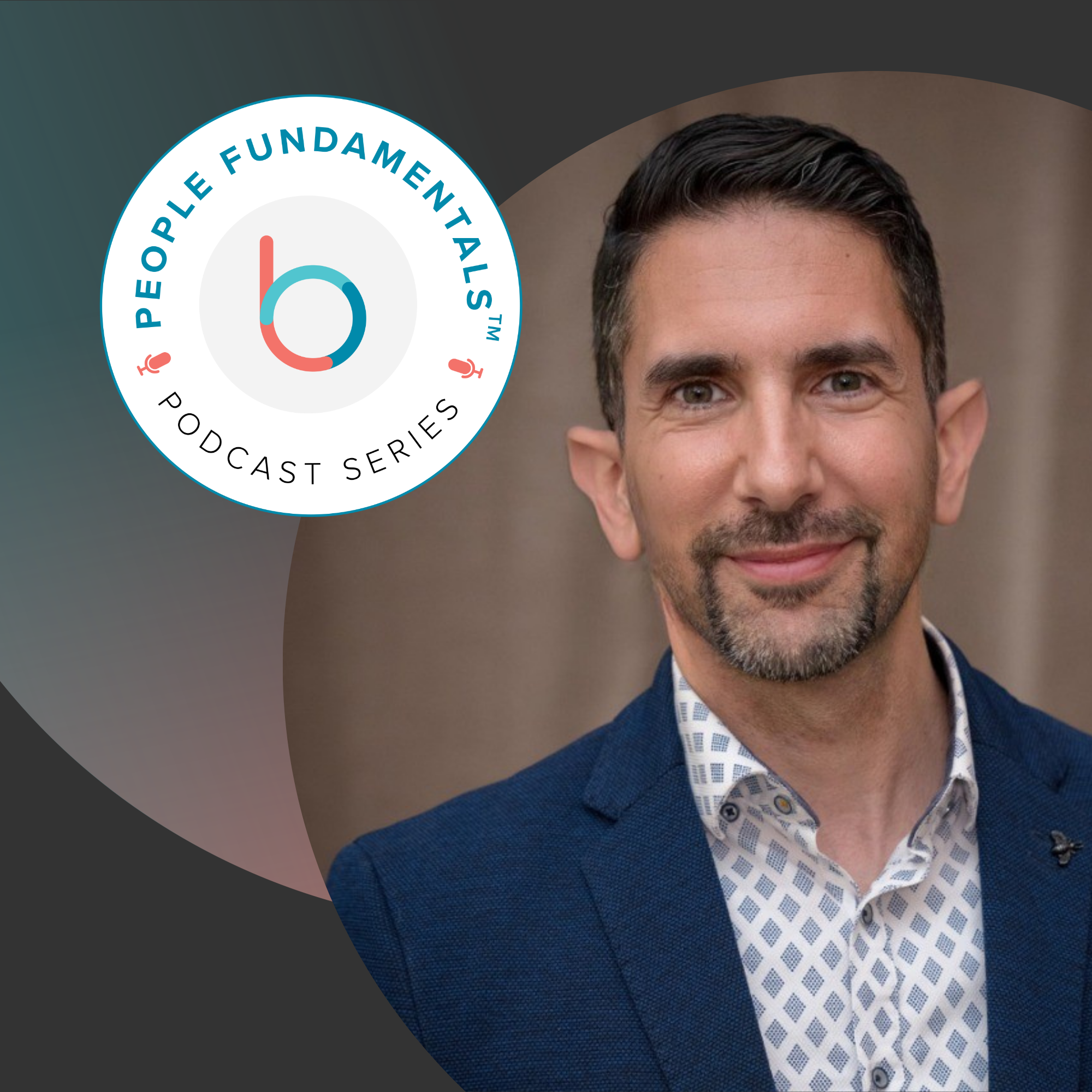How can you be sure your workforce is moving toward its full potential? By instilling accountability in the workplace. This can be achieved by setting performance goals, providing feedback, and tracking progress — behaviors that reinforce a sense of responsibility among team members.
The structure of accountability helps employees focus on professional growth and strong performance while driving business results. Betterworks’ 2023 State of Performance Enablement report found that employee engagement and productivity soar when accountability is embedded within workplace systems. Employees who receive fair and unbiased performance management processes can accept criticism and apply what they’ve learned.
Discover what accountability looks like and why it matters, and get tips on how to instill accountability at work.
The benefits of accountability at work
When thinking of accountability at work, examples include completing tasks on time, meeting performance expectations, and teams working together productively and efficiently. Individual accountability can create a positive work environment where employees feel that everyone is doing their part to achieve shared goals.
Accountability can also build trust within teams. Cooperation and respect increase when everyone knows they can rely on each other to complete their tasks and meet deadlines. Performance improves because team members can focus on their work rather than compensating for people who aren’t accountable.
Accountability at work helps motivate your workforce. When employees are held accountable for their actions, they’re more likely to take ownership of their work. This can lead to increased job satisfaction, higher morale, and improved team performance. Healthy accountability creates an environment where mistakes are opportunities for growth and learning, rather than failures to be punished.
Accountability in action could look like a customer support representative facing a complex technical issue arising from a customer complaint. Despite lacking a clear solution, the rep investigates the problem, seeks advice from colleagues, and experiments with different potential solutions. This employee’s accountability motivates the team to brainstorm, leading to a temporary workaround that eases the customer’s concerns.
Healthy accountability creates an environment where mistakes are opportunities for growth and learning, rather than failures to be punished.
What is an accountability mindset?
An accountability mindset at work involves taking ownership of tasks, results, and responsibilities to drive personal and team success.
Leadership plays an essential role in fostering accountability at all levels of the organization. Leaders must set the example by taking responsibility for their work and the team’s overall outcomes. They must influence a culture where individuals take ownership of their work while holding each other accountable. HR leaders can contribute to this culture by helping managers communicate expectations and provide regular feedback and coaching to their direct reports.
An accountability mindset also requires trust and respect within the team. When team members have strong working relationships, they’re more likely to hold each other accountable in constructive ways. When workers are comfortable with each other, you’ll see better communication and collaboration — and results.
Finally, leaders should ensure that team members have the necessary resources and support to be successful. Besides resources for immediate tasks, leaders should also provide opportunities for employees to develop their skills and advance their careers.
How does this accountability mindset play out in a team? Consider a group of engineers tasked with creating a new product. The team has a strong team culture of accountability and shared reliance. The team works together to divide up tasks, checks in regularly to make sure issues are quickly addressed, and prioritizes deadlines.
This team is also successful because the leader sets clear expectations and follows through with ongoing feedback, including additional support for anyone who is struggling. The team works as a unit to ensure the project is completed on time and to the highest standard, and the leader offers strong recognition for a job well done.

How to build high-performance teams through accountability
Accountability is a key ingredient in strong workforce performance. Clear expectations help employees understand how their performance will be measured and that obstacles should be addressed as they arise. Accountability can encourage trust and respect between employees and their teammates and managers, as everyone feels invested in each other’s success.
Establish clear goals and expectations
As an HR leader, start by giving managers the resources they need to understand the business strategy. Share company goals, and explain the role each manager’s team plays in bringing the business strategy to life. Armed with that knowledge, managers can establish clear expectations for their teams. Effective performance management software can help managers and employees agree on goals and track progress in the flow of work.
That software can also help with establishing timely and ongoing feedback systems between managers and their employees. Continuous performance check-ins help employees stay aligned to goals.

Foster open and honest communication
Educate managers about the value of open communication and give them the resources to follow through in their daily interactions, such as our Manager’s Ultimate Guide to Great Conversations. When managers understand the variety of conversations and questions available to them, they can communicate more effectively and take accountability for helping employees achieve their goals.
Effective communication also requires managers to listen closely so they understand their team members’ needs and perspectives. For example, HR can create a process for structured check-ins between managers and their teams through tools they already use every day, such as Slack.
HR leaders can also provide resources that help managers overcome communication challenges, such as guides to mediation and conflict resolution.
Encourage team members to take ownership of their work
When employees take ownership of their work, they’re actively engaging in tasks, accepting responsibility for outcomes, and making proactive decisions rather than only reacting. An example is a team member who experiments with ways to improve a flawed process instead of ignoring it.
Resources that help managers and teams take ownership could include mentorship programs, training and development opportunities, encouraging a culture where experimentation is welcomed, and making an activity, such as finding process improvements, a performance goal with measurable outcomes.
Use data to drive decision-making
Creating a culture of accountability increasingly depends on collecting, analyzing, and applying data. When managers have detailed data about their team’s performance, they can pinpoint strengths and weaknesses — including a lack of accountability. Managers also have a data-driven view of what factors might be hurting employee performance, such as a poor support system.
Managers may need training to help them interpret and apply performance data effectively and fairly. An intelligent performance management system with advanced analytics capabilities can help managers learn to apply team data to drive future performance.

7 accountability in the workplace examples
Accountability doesn’t have to be an abstract concept. When employees not only understand but can also visualize what accountable behaviors look like, they can develop better habits. Take these steps to inform and inspire your organizational culture.
Clarify expectations
By clarifying expectations, you help the workforce understand what their focus should be. Taking accountability is easier when you know what you’re being judged on. Explain what should be done, why it matters, and how it interacts with what other people are working toward. Adding context to expectations can foster teamwork, pride, and greater accountability. Most employees will want to meet their commitments and help the group, especially when they understand what’s at stake.
Clear expectations help employees understand how their performance will be measured and that obstacles should be addressed as they arise.
Reinforce inclusive behaviors
Leaders demonstrate accountability when they recognize and practice inclusive behaviors, especially for workers who historically have been excluded. Managers can practice this in their daily interactions by developing the habit of asking questions that provide better understanding. This curiosity and inquisitiveness naturally invites different points of view, including during team meetings. Managers who do this consistently reinforce the value of diverse perspectives and include everyone’s viewpoint.
Help employees track progress
Make sure employees have visibility into their progress toward performance and professional goals. This visibility is important for recognizing achievements, identifying roadblocks, and assessing progress since the last check-in. Armed with this information, employees can bring informed questions and suggestions to their regular manager conversations. This helps them take greater responsibility for their work, as they understand where they stand and what they must do next.
Call out team wins
Accountability can be a positive, especially when managers call out great work. Recognition boosts employee morale and engagement while showing the rewards of holding oneself accountable. Recognizing each team member in a group setting reinforces the sense that everyone is responsible for the organization’s success.
Learn from mistakes
Employees who learn from their mistakes demonstrate personal and professional development. They understand that mistakes can be opportunities for improvement. However, these employees need a culture where making mistakes is permitted.
Managers should discuss challenging situations with employees to identify what went wrong and how to improve. The employee can take accountability while still getting a chance to perform better going forward.
Share evaluational feedback
Evaluational feedback helps an employee understand how their output (e.g., interactions, project, presentation) compares against expectations, rather than just being critical of an employee’s efforts if they fall short of the mark (often called constructive criticism).
The willingness to accept evaluational feedback shows accountability. Such employees want to improve their thinking, habits, and processes. By using feedback to get better, employees improve the organization’s efficiency and effectiveness. A culture that uses evaluational feedback makes it easier for employees to be honest with each other about work issues. By talking through issues, they become more accountable for their individual and collective actions.
Reward accountability
When HR leaders and managers see accountability being practiced, they should call it out. Company culture reflects championed behaviors. Show that accountability is an important part of how work gets done. Some organizations even call this out in their company values.
The rewards for employees who are accountable can vary, including tangible rewards or meaningful verbal recognition from leadership. Make sure that these rewards are public enough to reinforce the message that accountability matters.

Power performance through accountable teams
High-performance organizations thrive when team members are accountable for their goals while enforcing accountability for their teammates and managers, and the company’s standards. Accountability isn’t just about pointing out failings; it’s a powerful way to bring people together, focus on shared goals, and elevate everyone’s motivation and sense of responsibility throughout the company.
Use these accountability in the workplace examples to help your people understand how they influence the bigger picture and why taking ownership of their work drives innovation and impact.
Want to learn more? Check out Leadership Accountability: Why It Matters and How to Fuel It.
Why leadership accountability matters?






